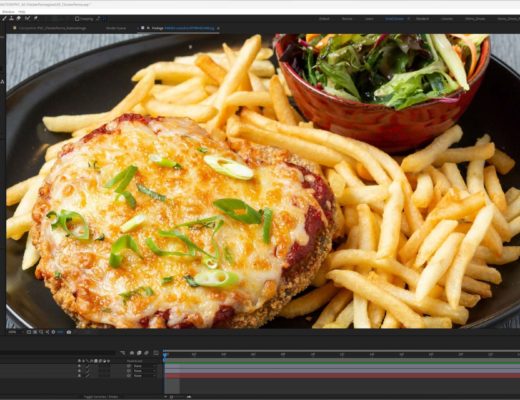
As someone who’s been on both sides of that table, I’ve been able to glean quite a bit of experience as to the pros and cons of each and determining a fair and competitive rate for each. What I’d like to do in this article is to give you tips on how to go about setting a rate for your work if you book yourself as a subcontractor, and what to keep in mind when hiring one.
Working as a Subcontractor for Other Studios
Wholesale vs. Retail
Just like in any other business where there is a series of costs that go into producing an end-product, the price the end-user pays for the product is the retail price. The price the manufacturer pays the supplier is a wholesale price. The same holds true for a service-oriented business.
Let’s say you’re a video producer who takes on corporate clients but also works for other studios from time to time as an independent contractor. If the going retail rate for services in your area is $X/hour, that’s what an end-user (in this case, a company or organization) can expect to pay for such a service.
If ACME Video Productions wants to hire you to shoot a video for them in that area, you should not expect to receive $X/hour. You’re now a wholesale service provider and ACME is the retail service provider. In order to make a profit, ACME needs to pay you much less than what they charge. It could be anywhere from 50% to 75% of X. The difference between X (the rate they charge the client) and Y (the rate you charge them), will be their gross profit on that job.

Your natural reaction may be that you’re doing the same amount of work, so you should get the same pay. But, it’s not that simple. Here are just a few reasons why it’s perfectly reasonable for you to charge less to ACME:
- It’s ACME’s ass on the line with the client. If YOU screw up, it’s ACME that has to deal with the consequences.
- Fewer headaches for you. All you have to do is shoot (or edit, as the case may be). That’s it. No customer service or client management issues. No worries about delivery schedules or backlogs.
- ACME paid for that client. ACME was the company that invested in both the time and the money to land that client. Chances are there were sales meetings, e-mails, phone calls, and budget proposals that took hours to write in order to land that job. Not to mention any marketing or advertising dollars spent ahead of time to get that client to find ACME in the first place. Every job ACME does has to pay for those expenses. All you had to do was show up.
Don’t get me wrong. I’m in no way minimizing the work that subcontractors do for the studios that hire them. But it’s just a simple reality in business. Wholesale vs. retail rates.
If you determine that your business cannot survive on the wholesale rates for your services, that’s fine, then focus your work on the retail side. But, I bet if you work the numbers, you’ll find that the profit you make after your salary (i.e. your time), marketing, advertising, etc., will be pretty darn close to the profit you could make if all you did was work for other studios who kept you busy with contract work.
The Benefit of Subcontractor Work
There are a number of benefits to making a living as a subcontractor for other studios vs running your own studio:
- You don’t have to spend thousands of dollars on sales and marketing costs.
- You don’t have to spend hours writing up proposals or schmoozing.
- You don’t have to spend hours on the phone every year with customers.
- As a subcontractor, you will most likely have a simpler business make-up, resulting in much less complicated local, state, and federal reporting requirements.

Another one of the key benefits of doing contract work for other studios is having a much smaller pool of potential clients to sift through. This allows you to be more focused in your marketing. Depending on where you live, you could focus your marketing on just the larger studios and producers in your area. If you’re a member of a local videographer association, for instance, you could market and reach out to the other members in the association.
With less sales, marketing, and administrative work, focusing strictly on subcontractor work can make your life a whole lot easier and your work more fulfilling.
Hiring and Working with Subcontractor Editors
For those of you relatively new in the business who are looking to build a studio, even if you wish to remain a 1-person “studio,” you will eventually be faced with the necessity to hire help. One of the most challenging hires to make is that of your editor. I say this because if you’re growing a video production business, a driving force behind your success will be the style and quality of the editing.
When making the decision to have someone else help with your editing because it’s so closely tied to the success of your company, you need to make sure that you hire editors that 1) can match your studio’s style, 2) can turn the project around fast enough, and 3) you can trust. This latter one is more related to subcontractors, but it needs to be considered regardless.

I’ve known a number of video producers and studios over the years at severe odds with ex-contractors due to allegations of stealing the hiring studio’s work. The process of finding qualified editors can be a long and arduous one. When I actively ran a video production company and first began hiring subcontractor editors, I would spend the better part of a month going through the process of recruiting, interviewing, and hiring.
But even before you actually pick who your editors are going to be, you need to determine what their status will be: contractors or employees.
Hiring Employees
Even though my focus has been on subcontractors, I want to cover employees a bit because many of the same considerations have to be made. The key difference with employees is that you have to deal with workers comp, payroll taxes, benefits, etc. Here are the pros and cons of hiring employees:
PROS
- With employees in your studio, you have more control over their work and their work habits.
- Easier quality control.
- They’re dedicated to your projects and don’t (usually) have other “clients” that could be prioritized over you.
- Usually, there’s a greater sense of loyalty with employees vs. contractors.
CONS
- Usually more expensive due to employer taxes, insurance, and equipment.
- Most employees will want full-time work and a salary. This may be more difficult for smaller studios to maintain.
- Employment laws (particularly in California) are heavily weighted towards the employee. So, you’re more susceptible to penalties if you don’t abide by those laws (e.g minimum wage, number of hours worked, overtime, firing, etc.)
If you’re building or running a traditional studio with office space, a strong client base, and consistent work, hiring employees will most likely be your best bet. But if you’re not quite there yet, subcontractors will be the way to go.
Hiring Subcontractors
Here are the pros and cons to using subcontracted editors:
PROS
- Don’t have to pay taxes, insurance, etc.
- Don’t have to buy additional equipment or software.
- Don’t need additional space.
- Don’t need to worry about employment laws.
- Can work on a project by project basis.
CONS
- Many subs also do work for other studios too, so your projects may take longer to turn around.
- Possibility of a subcontractor stealing your work.
- Quality control is more difficult.
- Getting footage to and from the subcontractor can be a challenge if they are located in a different city. Video collaboration services like Wipster, Frame.io, or Vimeo Business make that process much easier than it used to be. But even with such a service, if you have a terabyte or more of media to upload, it’s still a challenge.
- Subcontractors can sometimes be flakey and undependable.
The Buck Stops with You
No matter how you decide to outsource your editing, bottom line, the buck stops with you. That means that if your employee or subcontractor screws up, it’s your butt on the line. It’s your studio’s name on the project, and with that comes ultimate responsibility. The good news is, it works the other way around too. If you find a superstar editor who does amazing work, your studio gets the credit. Of course, if you find someone like that, make sure you treat them well.
Getting it in Writing

Before I finish this up, I want to cover the legal considerations when hiring help (beyond federal, state, or local laws).
One-offs vs. Umbrella Agreements
There are two ways in which I’ve handled contracts with subcontractors: one-off agreements (creating a contract on a per-project basis), and umbrella contracts (creating a blanket agreement that covers projects for a given period of time). Umbrella agreements are good if you know the work will be consistent.
When I actively ran my video production company, I was frequently working with six to eight subcontractors on a regular basis. It would have been an administrative headache if I drew up a separate contract for each of them every time I gave them any kind of editing assignment (and many of them I hired as shooters as well). So I usually drew up an umbrella agreement that lasted a year.
The primary purpose of my umbrella agreements was to establish pre-agreed upon contractual arrangements regarding copyright ownership, turn around time, tax responsibility, and payment schedule. I would usually keep the payment section flexible enough so that the actual rate could be determined at the time of the job.
Below is a list of key points I suggest you include in your contracts:
- Payment: how much you plan to pay the contractor. Make sure you include how you plan to handle revisions. Whether you stipulate in the contract or decide via email, determine beforehand how much you’ll pay the contractor for hourly work done on your project after the first draft is completed.
- Timeliness: stipulate how and when you make payments to contractors. I would make final payments at the latter of 15 days from final delivery or when the contractor formally invoiced me. In some cases, you may pay a retainer or deposit upfront. That is perfectly okay and even encouraged. Give the contractor confidence you’re serious.
- Taxes and insurance: stipulate that as a subcontractor, he/she is responsible for their own taxes and insurance.
- Work for hire and copyright ownership: it’s good to formally state in the contract that this is work for hire. That’s a legal term that basically says you’re hiring them for a job to produce certain work(s). As such, all they produce for you belongs to you. Specify that you retain copyrights and ownership (where applicable) for any work they do for you. This includes project files they create in the execution of the job. This section is especially important when hiring shooters, because outside of an employee relationship, by law, whoever captures an image owns the right to that image. If you don’t have a contract with a shooter that specifically defines you as the owner, you could find yourself in an awkward situation if there’s ever a rift between you and the shooter.
- Promotion: stipulate that unless you give permission to do so, none of the work created by the contractor can be used to promote the contractor’s business. This part is tricky. On one hand, you need to protect the fact that this is your job. Ultimately, you are responsible to your client. It’s your company’s name on the video, and you are paying the contractor to edit it for you. So, it’s yours and they shouldn’t be allowed to compete against you with your own work. My recommendation is to be flexible in this area. Some editors specifically only do contract work for other studios, so they’re not competing with you for the same jobs. In essence, they are full time “wholesale” editors (whereas you’re the “retail” editor marketing yourself to the customer). Nothing precludes them from pointing to a video online and saying they edited it on behalf of your studio. But there’s a difference between them having to point to a video on your website vs having it embedded on theirs.
- Confidential information: stipulate that any information the editor is privy to as a result of the job should be held in strictest confidence.
Set Expectations
Lastly, before you assign any job to an editor, set expectations. Spell out in writing precisely what it is you want the editor to do, how much time you want to give them to do it, and how much you plan to pay them. If you already have an umbrella agreement with them, this can be done via email.
When describing the assignment, make sure you mention the approximate number of hours of raw footage. Editing a 5-minute video from two hours of footage is much different than editing a 5-minute video from twenty hours of footage. To give a fair rate, the contractor needs to know everything they’re dealing with. If possible, give the editor samples of work you’ve done in the past that is most like what you’re asking him/her to do now.
The Golden Rule
At the end of the day, treat your subcontractors the way you’d want to be treated. Protect your business, but when possible, make it easy for your editors to grow their businesses too. What goes around comes around. Be smart and fair. Don’t be afraid to say what you want and that you expect exceptional work. Treat your contractors right, pay them a fair rate, and be the kind of producer/employer that elevates the business and the community.
What tips do you have about hiring subcontractors? Share in the comments or on social media.
Editor’s note: For more about the business side of filmmaking please read some of our other ProVideo Coalition content on similar subjects.

Filmtools
Filmmakers go-to destination for pre-production, production & post production equipment!
Shop Now













